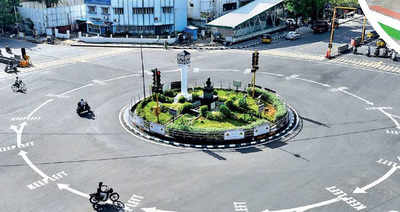The Hindu 29.12.2010
Adyar Poonga gets finishing touches
S. Aishwarya
|
Pitchandikulam Forest Consultants, Auroville, surveying the variety of |
— Photo: S.S. Kumar

Gearing up:Work on phase-I of Adyar Poonga, set for inauguration on
January 3, is in full swing.
CHENNAI: Amid the small patches of grass-covered mounds and lawn, the
name Adyar Poonga, carved in a series of seven stones, welcomes
visitors. The seemingly open area gives no indication of the sprawling
park tucked behind it.
Walkways from the entrance leading to other areas remain unpaved and a
bunch of display boards are stacked against a tree. The works to mow
the overgrown grass, prune trees and plants, and design the pathways now
are in full swing to complete the phase I of Adyar Poonga, which is
scheduled to be inaugurated on January 3 by Prime Minister Manmohan
Singh.
Works to complete the landscaping, bridges, children interactive
learning space, and amphitheatre are in progress, according to
officials.
“Most of the works are complete and we are giving finishing touches
to some areas. It will be completed well before the inauguration,” said a
senior officer associated with the project.
To document the increasing number of species being spotted in that
area, a team of researchers and ecologists is constantly monitoring the
restoration process of the Poonga.
The water quality is being periodically assessed by Anna University,
sand quality by Stella Maris College and Pitchandikulam Forest
Consultants, Auroville, are surveying the number and variety of
vertebrates in the park, he added.
Joss Brooks, Chief Architect of Pitchandikulam Forest Consultants,
which is the consultant for the project, says the major challenge is to
channel the sewage that got into the Poonga. “This is an eco-sensitive
area, which can be affected by even the slightest change in the
environment. The cooperation from the government was quite encouraging
and we managed to tackle the problem,” he said.
Describing it as a classic example of transformation of a waste land
into a diverse forest area, Mr. Brooks said Chennai was built on many
such wet lands, which are fast getting filled up with concrete
structures. The wet lands, he said, should be made into recreational
areas, which would increase the lung space of the city. To make sure the
natural inhabitants of the land are not disturbed, no exotic plants
have been introduced in the park.
Observing that they would maintain the park for two years as part of
the contract, he said the park would require minimum maintenance as the
idea was not to beautify the place but to enrich the bio-diversity. “We
have also proposed to set up a training institute in the park, which
would train people on restoration ecology. It is a step to create a
broader awareness about the need to maintain such eco-sensitive places.”
Foundation would be laid for the phase-II of the project, which would
extend up to Santhome Causeway, at the inauguration of the phase-I.

